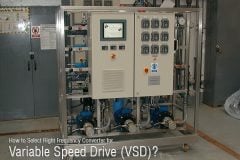During Second World War the gasifiers were mainly employed for transportation purposes. However, in recent years the gasifiers have been employed mainly for stationary applications.
A. Electricity generation
For generating electricity, the producer gas from the biomass gasifier is first cleaned and cooled and then used as a fuel in an IC engine. A generator coupled to the engine produces electricity.
Biomass gasifier engine sets are typically available in capacities ranging from 10 kWe to 500 kWe. Two types of engines are used. Diesel engines are modified and can be run on a mixture of diesel and producer gas. These are called dual-fuel engines. Typically 60 -85% diesel is replaced with producer gas. Now 100% producer gas engines are also available — as the name suggests these can operate on 100% producer gas.

Biomass gasifier based electricity generation has typically been used for three types of applications:
A.1 Village electrification in an off-grid mode
In recent years biomass gasifiers have been used for electrification of remote villages. The size of such systems can vary from 10kWe to 500 kWe. In India, several of the smaller size (10-20 kWe) biomass gasifier systems have been established under two Government of India schemes called Remote Village Electrification (RVE) and Village Energy Security Programme (VESP). Apart from the Government programmes, several NGOs and corporate have also established such systems.
There have been a few instances like 500 kWe biomass gasifier based power plant at Gosaba island in Sundarbans (India) where large capacity gasifiers have been used.
Gosaba rural electrification project
One of the first successful applications of biomass gasifier for rural electrification in an off-grid mode is 500 kWe gasifier plant set-up at Gosaba island of Sundarban in India. The plant was set-up in 1997 and consists of 5 x 100 kWe units. The gasifiers are closed-top downdraft systems based on woody biomass. The plant has dual-fuel engines.
The transmission and distribution line is spread over a length of 6.25 km of high-tension line and 13.67 km of low-tension line. The plant serves around 900 consumers. The plant is managed by a local co-operative and the state government.
Source: Ghosh, Sagar and Kishore (2003)
A.2 Grid-connected biomass gasifier based power plants
There are some examples of grid-connected biomass gasifier power plants. These are relatively large sized gasifier with capacities ranging in hundreds of kW. A typical example is presented below.
Arashi Hi-Tech Bio Power Pvt Ltd, Sulthanpet, Coimbatore, Tamilnadu
 Arashi Hitech Bio power an independent power producer (IPP) has set up a gasifier based power plant linked to the State grid. It is located in Sultanpet village in Coimbatore district of Tamilnadu, where there is abundance availability of coconut shells. The power plant comprises a biomass processing system, gasification system, PLC based automation and control system, full fledged water treatment plant, power package and a power evacuation system. In the first phase, an 800 kg/hr gasifier system was integrated with a low speed marine diesel engine in July, 2002.
Arashi Hitech Bio power an independent power producer (IPP) has set up a gasifier based power plant linked to the State grid. It is located in Sultanpet village in Coimbatore district of Tamilnadu, where there is abundance availability of coconut shells. The power plant comprises a biomass processing system, gasification system, PLC based automation and control system, full fledged water treatment plant, power package and a power evacuation system. In the first phase, an 800 kg/hr gasifier system was integrated with a low speed marine diesel engine in July, 2002.
The power plant has operated in the dual-fuel mode at an average load of 600 kWe for nearly 6000 hours. The average liquid fossil replacement recorded is about 68%, with specific biomass consumption being 0.6-0.7 kg/kWh. Recently the dual-fuel engine has been replaced with 5 x 250 kWe producer gas engines.
Source: Gokhale, Gupta, Kishwan et al. (2007)
A.3 Biomass gasifier for captive power generation
Biomass gasifier plants in an industry or an institute are usually used as captive power generation unit. In India, a large number of systems have been put-up in rice mills, with rice-husk as the feed material for gasifiers.
B. Thermal applications
A very large number of micro, small and medium enterprises (MSME) use biomass as well as fissile fuels for generating heat. With continued rising prices of fossil fuels coupled with their scarcity (quota) in open market many of these small and are facing serious problems in controlling fuel cost and as a result keeping competitive pricing for existence in the market.
Gasification technology offers them an option to have all benefits of gaseous fuels using comparatively cheaper locally available solid biomass fuel. There are a variety of fuel-fired furnaces that are ideal candidates for switching over to producer gas from biomass. Theses are listed in table 1.4.
| Type | Application/ Temperature (°C) |
| Forging furnace | 1200 -1250 |
| Re-rolling mills | 900-1200 |
| Direct fired process heaters | food, textile, paper, printing, chemical, rubber, plywood and plastic industries |
| Dryers | paper, cardboard, wood and lumber, textile, ceramic, tobacco, plastic, paint, food, and pharmaceutical industries |
| Kilns | Gypsum, vitreous china-plumbing fixture, brick and structural clay, and concrete industries. |
| Ovens | Low-temperature (ranging between 20 to 370 degree Celsius) cooking, baking, curing, or to vulcanize (a treatment that stabilizes and adds elasticity) rubber or plastic. The food industry uses ovens to bake bread, cookies, crackers, pretzels, while the rubber and plastic industries use the lower temperature heat produced in ovens in the production of tires, footwear, hosiery, and rubber belts (e.g., fan belts). |
| Small boilers | Various industries |
A large experience exists now in use of thermal gasifiers for industrial applications. A good documentation of different applications can be found in CII (2005) ; Mande and Kishore (2007).











ToHow much extent this biomass applications were using in india